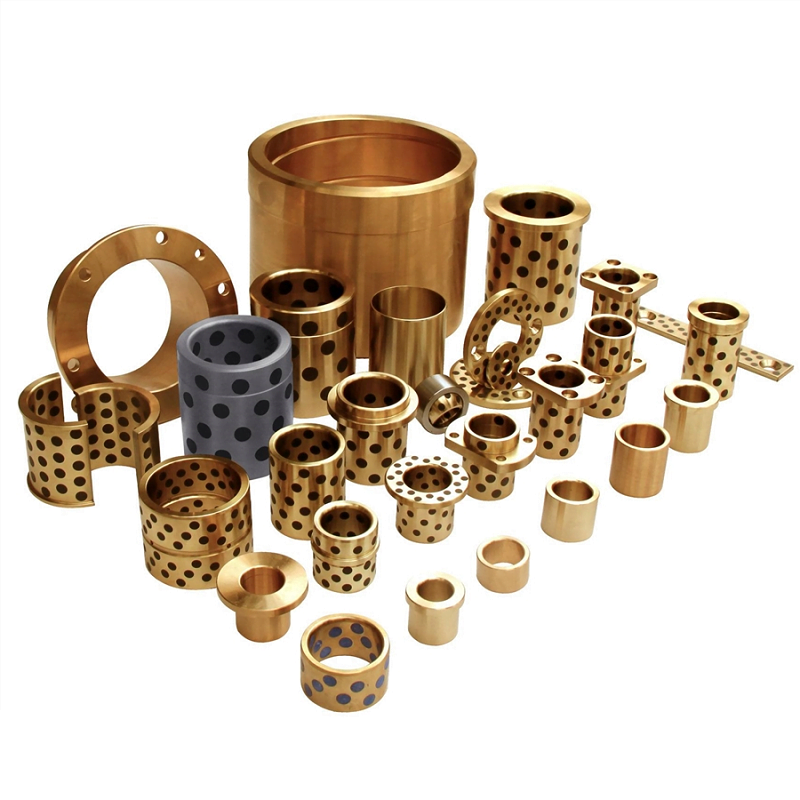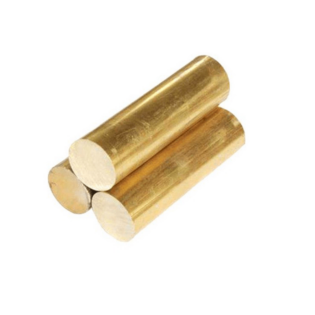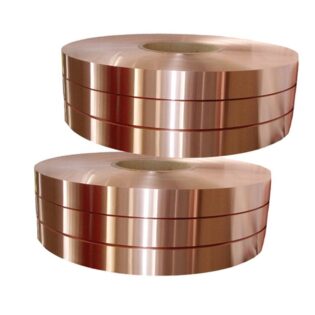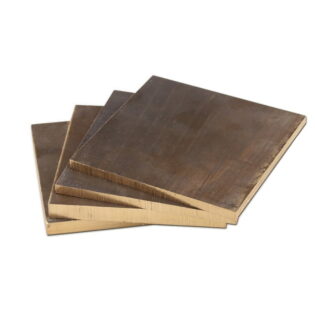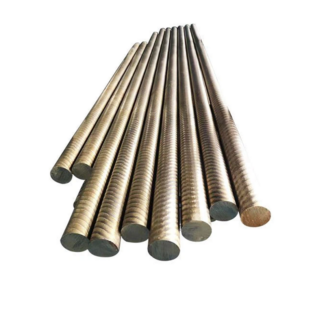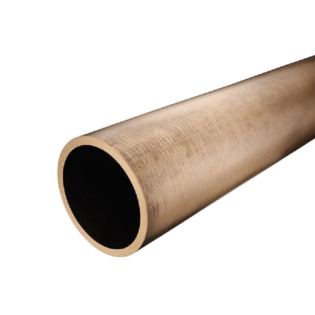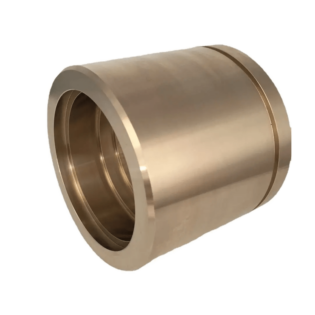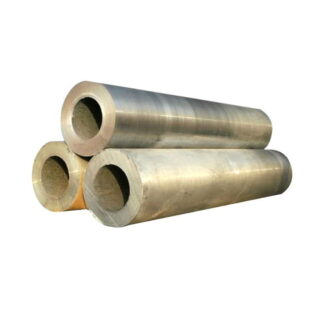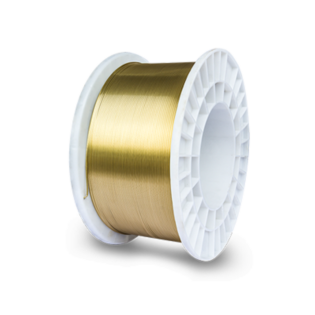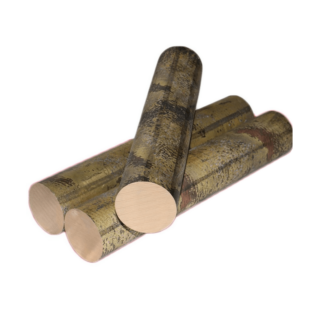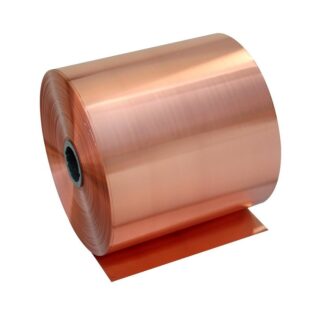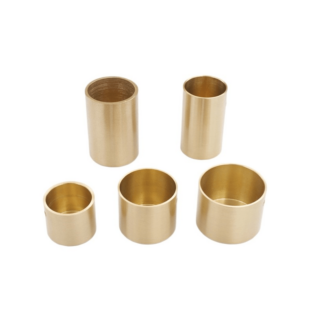C46400 Naval Brass Specifications
| End Product | Specification |
| Bar | AMS 4611, 4612, ASTM B21, FEDERAL QQ-B-639, SAE J463, J461 |
| Bar, Forging | ASTM B124 |
| Bolts | ASTM F468 |
| Forgings, Die | ASTM B283 |
| Nuts | ASTM F467 |
| Plate | FEDERAL QQ-B-639 |
| Plate, Clad | ASTM B432 |
| Plate, Condenser Tube | ASME SB171, ASTM B171 |
| Rod | AMS 4611, 4612, ASTM B21, SAE J463, J461 |
| Rod, Forging | ASTM B124 |
| Screws | ASTM F468 |
| Shapes | ASTM B21 |
| Shapes, Forging | ASTM B124 |
| Sheet | FEDERAL QQ-B-639 |
| Strip | FEDERAL QQ-B-639, SAE J463, J461 |
| Studs | ASTM F468 |
| Wire, Metallizing | MILITARY MIL-W-6712 |
C46400 Naval Brass
If you have spent any time around metals then you know just how malleable and strong brass is. This is primarily due to its combination of copper and zinc – and the occasional addition of tin and other metals. And while brass is good for a lot of things, it is not good for conditions that require constant contact with varying humidity, moisture, or water. Especially if it is saltwater. For this type of application, you are going to need Naval Brass, a type of brass classified as Alpha.
C46400 is the classic Naval Brass and gets its name from its historical application in the marine trades. Sometimes referred to as Marine Brass, this metal has been widely used in military applications. Thanks to the addition of tin and zinc, it holds up well in wet conditions – including underwater environments.
Naval Brass has been used as propeller shafts, marine hardware, and fittings. It is a great metal choice to use in both salt water and freshwater applications. In addition, it has many industrial applications.
As mentioned, because of its strong, corrosive-resistant and hardness it is also a great material to use for industrial applications. It has been used for welding rods, condenser tubes, structures, aircraft parts, decorative and more.
Lion Metal carries C46400 Naval Brass in Sheet, Plate and Rounds and we also have it in a specialty product, C46400 Diamond Cut Naval Brass Plate. We carry a wide range of diameters in solid bar stock and thicknesses in the sheet and plate. We will cut the material to length. C46400 Naval Brass is one of the top choices for industrial and marine atmosphere applications. This is due to it’s high corrosion resistance to seawater.
Typical uses
Builders hardware: lock pins
Electrical: precision shipboard equipment
Fasteners: bolts, nuts, rivets
Industrial: aircraft turnbuckle barrels, balls, bearings, bushings, condenser plates, dies for golf ball production,heat exchanger tubes, hub cones, pressure vessels, structural uses, valve stems, welding rod
Marine: decorative fittings, hardware, propeller shafts, shafting, turnbuckles
Ordnance: missile components
Other: baffle plates and flanges
Plumbing: fittings
Similar or equivalent specification
| CDA | ASTM | SAE | AMS | Federal | Military | Other |
|---|---|---|---|---|---|---|
| C46400 | B21 B21M | J461 J463 | QQ-B-639 |
Chemical composition
| Cu% | Pb% | Sn% | Zn% | Fe% | |||||||
|---|---|---|---|---|---|---|---|---|---|---|---|
| 59.00- 62.00 | 0.20 | 0.50- 1.00 | Rem. | 0.10 | |||||||
Chemical composition according to ASTM B21/B21M-20 Note: Cu + sum of named elements, 99.6% min. Single values represent maximums. | |||||||||||
Machinability
| Copper alloy UNS No. | Machinability rating | Density (lb/in3 at 68 °F) |
|---|---|---|
| C46400 | 30 | 0.304 |
Mechanical properties
C46400
H02 half hard
Size range: ½” and under
| Tensile strength, min | Yield strength, at 0.5% extension under load, min | Elongation, 4x diameter or 4x thickness, min | Rockwell “B” hardness | Remarks | ||
|---|---|---|---|---|---|---|
| ksi | MPa | ksi | MPa | % | min to max HRB | |
| 60 | 414 | 27 | 186 | 22 | ||
Size range: over ½” to 1″ inclusive rod
| Tensile strength, min | Yield strength, at 0.5% extension under load, min | Elongation, 4x diameter or 4x thickness, min | Rockwell “B” hardness | Remarks | ||
|---|---|---|---|---|---|---|
| ksi | MPa | ksi | MPa | % | min to max HRB | |
| 60 | 414 | 27 | 186 | 25 | 60-80 | |
Size range: over 1″ to 2″ inclusive rod
| Tensile strength, min | Yield strength, at 0.5% extension under load, min | Elongation, 4x diameter or 4x thickness, min | Rockwell “B” hardness | Remarks | ||
|---|---|---|---|---|---|---|
| ksi | MPa | ksi | MPa | % | min to max HRB | |
| 58 | 400 | 26 | 179 | 25 | 55-80 | |
Size range: over 2″ to 3″ inclusive rod
| Tensile strength, min | Yield strength, at 0.5% extension under load, min | Elongation, 4x diameter or 4x thickness, min | Rockwell “B” hardness | Remarks | ||
|---|---|---|---|---|---|---|
| ksi | MPa | ksi | MPa | % | min to max HRB | |
| 54 | 372 | 25 | 172 | 25 | 55-80 | |
Size range: over 3″ to 4″ inclusive rod
| Tensile strength, min | Yield strength, at 0.5% extension under load, min | Elongation, 4x diameter or 4x thickness, min | Rockwell “B” hardness | Remarks | ||
|---|---|---|---|---|---|---|
| ksi | MPa | ksi | MPa | % | min to max HRB | |
| 54 | 372 | 22 | 152 | 27 | 55-80 | |
Size range: over 4″
| Tensile strength, min | Yield strength, at 0.5% extension under load, min | Elongation, 4x diameter or 4x thickness, min | Rockwell “B” hardness | Remarks | ||
|---|---|---|---|---|---|---|
| ksi | MPa | ksi | MPa | % | min to max HRB | |
| 54 | 372 | 22 | 152 | 30 | 55-80 | |
Physical properties
Physical properties provided by CDA | |||||||||||
| US Customary | Metric | ||||||||||
|---|---|---|---|---|---|---|---|---|---|---|---|
| Melting point – liquidus | 1650 °F | 899 °C | |||||||||
| Melting point – solidus | 1630 °F | 888 °C | |||||||||
| Density | 0.304 lb/in3 at 68 °F | 8.41 gm/cm3 at 20 °C | |||||||||
| Specific gravity | 8.41 | 8.41 | |||||||||
| Electrical conductivity | 26% IACS at 68 °F | 0.151 MegaSiemens/cm at 20 °C | |||||||||
| Thermal conductivity | 67 Btu/sq ft/ft hr/°F at 68 °F | 116 W/m at 20 °C | |||||||||
| Coefficient of thermal expansion 68-572 | 11.8 · 10-6 per °F (68-572 °F) | 20.4 · 10-6 per °C (20-300 °C) | |||||||||
| Specific heat capacity | 0.09 Btu/lb/°F at 68 °F | 377.1 J/kg at 20 °C | |||||||||
| Modulus of elasticity in tension | 15000 ksi | 103420 MPa | |||||||||
| Modulus of rigidity | 5600 ksi | 38611 MPa | |||||||||
Fabrication properties
| Technique | Suitability | ||||||||||
|---|---|---|---|---|---|---|---|---|---|---|---|
| Soldering | Excellent | ||||||||||
| Brazing | Excellent | ||||||||||
| Oxyacetylene welding | Good | ||||||||||
| Gas shielded arc welding | Fair | ||||||||||
| Coated metal arc welding | Not recommended | ||||||||||
| Spot weld | Good | ||||||||||
| Seam weld | Fair | ||||||||||
| Butt weld | Good | ||||||||||
| Capacity for being cold worked | Fair | ||||||||||
| Capacity for being hot formed | Excellent | ||||||||||
| Forgeability Rating | 90 | ||||||||||
| Machinability rating | 30 | ||||||||||
Fabrication properties provided by CDA | |||||||||||
Thermal properties
| Treatment | Minimum* | Maximum* | |||||||||
|---|---|---|---|---|---|---|---|---|---|---|---|
| Annealing | 800 | 1100 | |||||||||
| Hot treatment | 1200 | 1500 | |||||||||
Thermal properties provided by CDA *Temperature is measured in Fahrenheit. | |||||||||||
Common fabrication processes
Blanking, drawing, forming and bending, heading and upsetting, hot forging and pressing, hot heading and upsetting, shearing
Common fabrication processes provided by CDA
